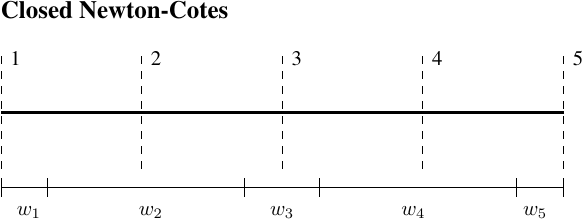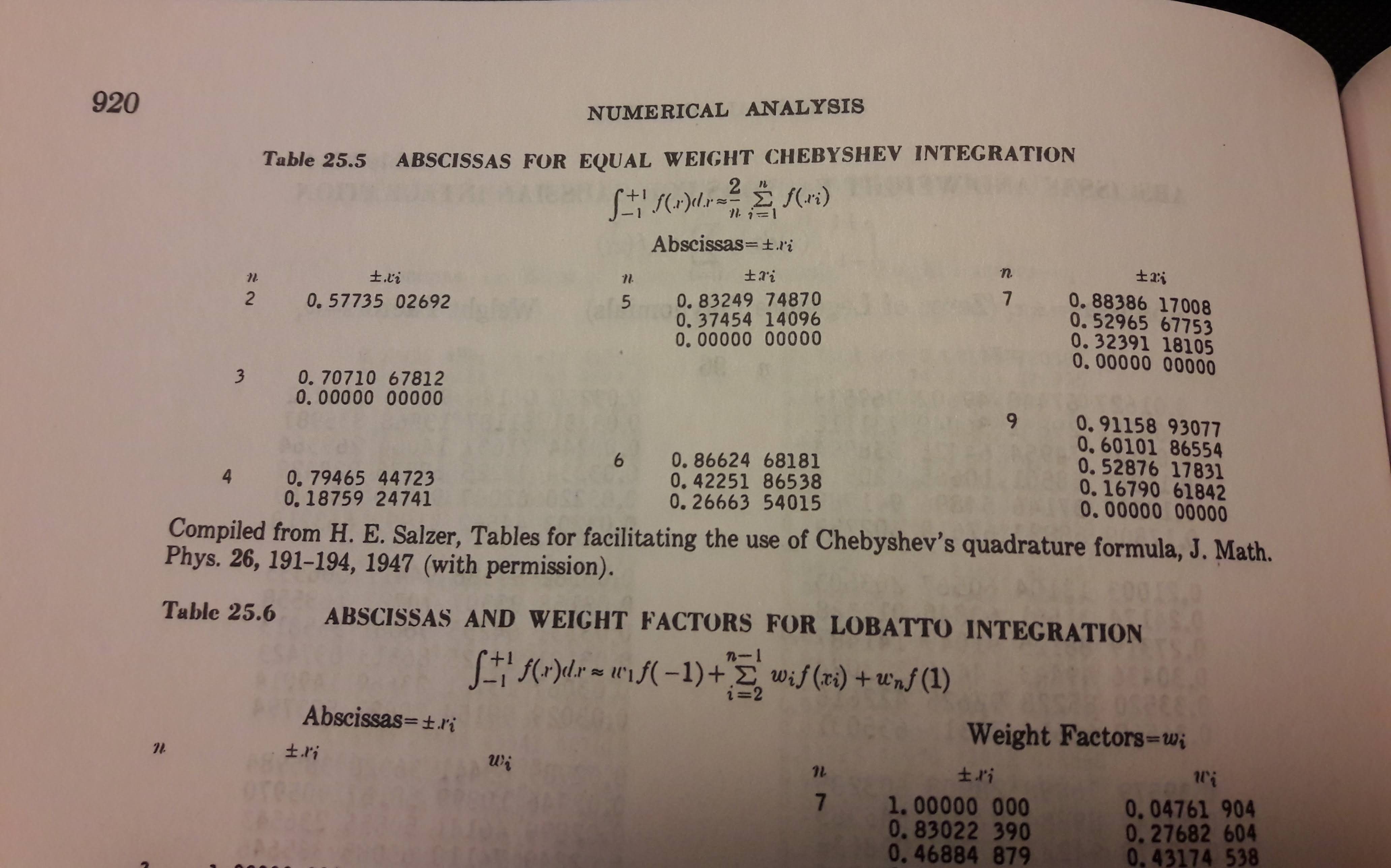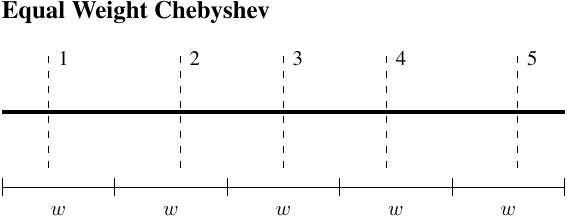OpenSees Cloud
OpenSees AMI
Heavy as a Chebyshev
Original Post - 25 Apr 2021 - Michael H. Scott
Show your support at Buy Me a Coffee.
Numerical integration, or quadrature, is essential for material nonlinear finite element formulations. Gauss, Gauss-Lobatto, or a plastic hinge approach is all you need for frame elements. And for fiber sections, midpoint integration gets the job done. Besides some highly specialized cases, there’s no need to use other types of numerical integration in nonlinear structural analysis.
One specialized case is Newton-Cotes integration, where the integration points (abscissas) are equally spaced–useful for recording internal forces and deflections at uniform intervals along a frame element. There are open and closed versions of Newton-Cotes, with the closed version preferred for force-based frame elements because it puts integration points at the ends. The closed N=5 case is shown below.

Closed Newton-Cotes is implemented in OpenSees as one of many beam integration options. Note that you get negative integration weights for odd values of N>8 with closed Newton-Cotes, so you have to be a little careful.
Newton-Cotes has been in OpenSees for some time. More recently, after ordering the famous Abramowitz and Stegun (A&S) mathematical reference book, I came across Table 25.5 on equal weight Chebyshev integration.

A high order integration rule with equal weights instead of equally spaced points? Is this the contra-gradient, or mirror twin, to Newton-Cotes? Yeah, it kinda is. The N=5 case is shown below.

As far as I know, there is no “closed” equal weight Chebyshev integration where abscissas are at the ends, so this integration would not be useful for force-based frame elements. Another, more serious, drawback to equal weight Chebyshev intergration is some of the abscissas become complex for N=8 and N>9, which is why you don’t see these cases listed in A&S Table 25.5.
I suppose if you wanted to nail the exact value of I for a rectangular patch of fibers, you could use a grid of equal weight Chebyshev integration points. Go ahead, hammer away.
But I can’t think of any other situation where equal weight Chebyshev integration would be useful in nonlinear structural analysis. So, I’m putting it out there for you to chew on.
Anything useful, readers in the OpenSees universe? Or should equal weight Chebyshev integration remain buried in the A&S reference book?
Note that equal weight Chebyshev integration is different from Chebyshev-Gauss quadrature, which uses weighting functions that are not equal to one. Accordingly, when applied to frame elements or fiber sections, the sum of Chebyshev-Gauss integration weights will not equal the element length or section area, respectively. In other words, you will fail a patch test.